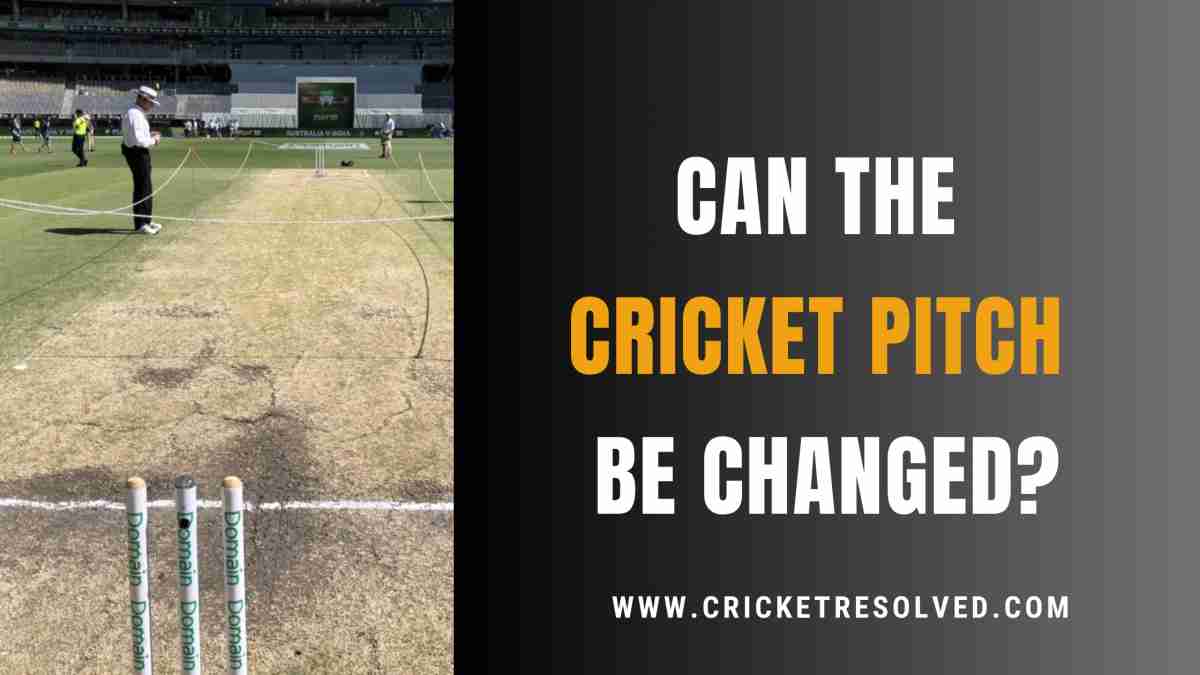
Cricket, a game that ignites passion and sparks camaraderie among fans, thrives on its intricate nuances. Beyond the boundary hits and spectacular catches, there’s a world of decisions that define the course of play.
Today, let’s dive into a lesser-known aspect – the intriguing world of changing pitches in cricket, a phenomenon that impacts the game’s dynamics.
Dangerous or Unreasonable Pitch
In December 2022, the Ranji Trophy encounter featuring Railways and Punjab, originally scheduled for four days, encountered a unique scenario. The game came to a halt on the second day, setting the stage for a fresh start on the third day. Surprisingly, the remaining two days of the match will unfold anew, commencing on a fresh pitch.
The procedure aligns seamlessly with the regulations outlined by the Board of Control for Cricket in India (BCCI). This intriguing development serves as a reminder that whenever the pitch conditions are deemed “dangerous or unreasonable,” such a restart can be initiated to ensure the integrity of the game.
The decision to change the pitch due to dangerous or unreasonable conditions isn’t the initial option available. It’s noteworthy that this option ranks third in priority among the four possible options available. It’s only considered after eliminating the first two options.
Now, let’s delve into what the playing conditions stipulate about the “Fitness of the Pitch for Play.”
When, during a match, the umpires assess the pitch as dangerous or unreasonable for gameplay, they promptly stop the game and communicate their observations to the BCCI match referee. However, this stop in the game doesn’t mark its conclusion. Instead, a structured process comes into play, guided by the Play Control Team (PCT), which comprises umpires and the BCCI match referee.
Must Read: How Long is a Cricket Pitch?
The following steps elucidate the sequence of protocols that the PCT follows.
Option 1: Consult the Captains about Continuing on the Same Pitch
The on-field umpires and the BCCI match referee will engage in discussions with both team captains. Should the captains reach a consensus to proceed, the game will recommence. If the decision is not to resume play, the on-field umpires and the BCCI match referee shall consider the second option.
Option 2: Exploring the Possibility of Pitch Repair and Match Resumption
- Addressing specific issues: Repairs will be conducted to address the specific issue at hand.
- The BCCI match referee’s perspective: As they deliberate the possibility of repairing the pitch, the BCCI match referee wears the hat of fairness. They consider whether allowing repairs would tilt the balance unfairly, considering the game that occurred on the unsafe pitch.
- Guiding the remediation: The responsibility of overseeing the pitch repairs falls upon the on-field umpires and the relevant ground authority. This procedure delicately balances reinstating equilibrium and upholding the game’s integrity.
- The timing holds significance: The on-field umpires take charge of establishing fresh start and finish times, along with any required adjustments, as detailed in this context.
- Match resumption: If the repairs are successful, the game resumes from the point it paused. The time lost is gracefully addressed within the contours of the rules.
If the repair work does not receive approval, the PCT will then consider the third option.
Also Read: Decoding the Duties of Umpires in Cricket: A Comprehensive Guide
Option 3: Embarking on an Alternate Pitch Journey
- Pitch preparations: If an alternate pitch emerges as a viable option, the on-field umpires and the relevant ground authority embark on a journey of preparation.
- Timings unveiled: Similar to pitch repair, the rescheduled start and conclusion times are determined by the on-field umpires, ensuring fairness throughout.
- A fresh start: A new pitch calls for a fresh beginning. The match restarts with the first ball, demanding new team nominations and the toss. The lost time between the originally scheduled start and the new match’s actual kickoff is reconciled as per the rules.
If, due to any circumstances, opting for an alternative pitch is not feasible, the PCT will be left with no choice but to proceed with the next available option.
4. Option 4: The Abandonment Conundrum
Having exhausted all other options, the PCT will be left with the decision to terminate the game. In the context of a multi-day match, the game will be deemed abandoned.
On the other hand, for limited-over matches, the outcome will be categorised as “no result” unless the number of overs played in the second innings meets the criteria necessary for the game to be valid and for a result to be declared.
Conclusion
Cricket’s magic lies not just in wickets and runs but in the decisions that define its journey. The recent Ranji Trophy spectacle between Railways and Punjab shone a spotlight on pitch changes, a facet rarely explored.
Notably, changing the pitch isn’t the immediate route; it ranks third among options. The protocol, meticulously followed by umpires and the PCT, reflects cricket’s spirit. From captain consultations to exploring repairs and alternatives, every move is calculated. It’s a chessboard of judgement and fairness.
As the curtains draw with no other recourse, a verdict emerges — sometimes a conclusion, sometimes a limited over match, or no result. This is cricket beyond the boundary, where decisions shape destiny and keep the game’s heart beating.
Read Next: 25+ Weird and Unknown Cricket Rules – Complete List


